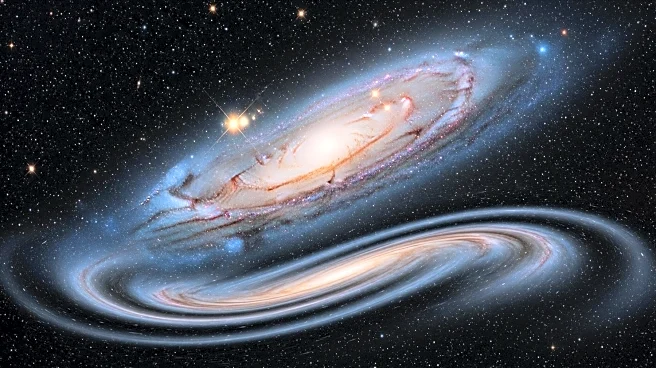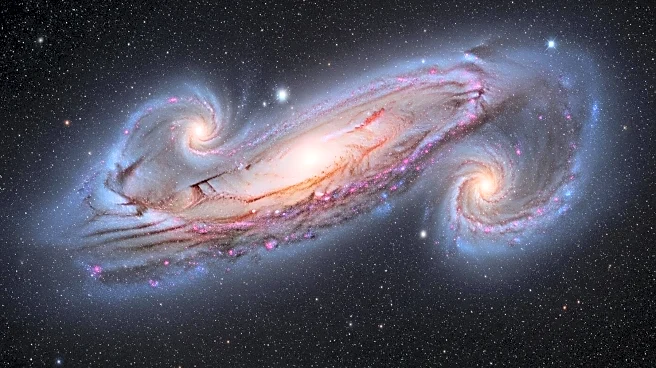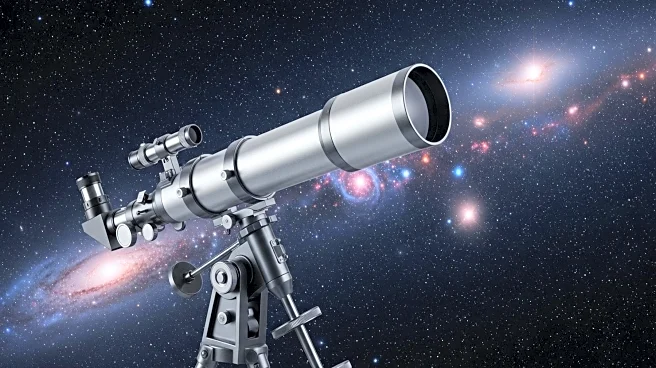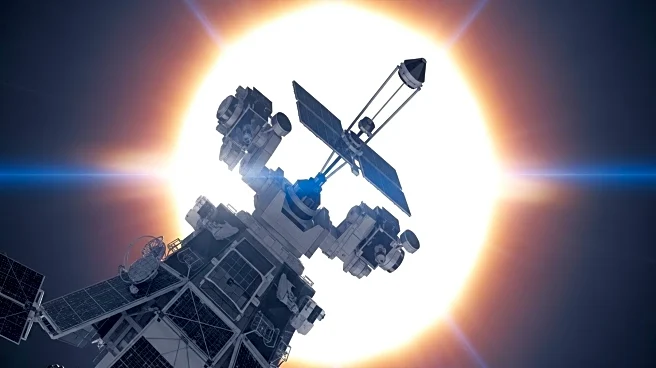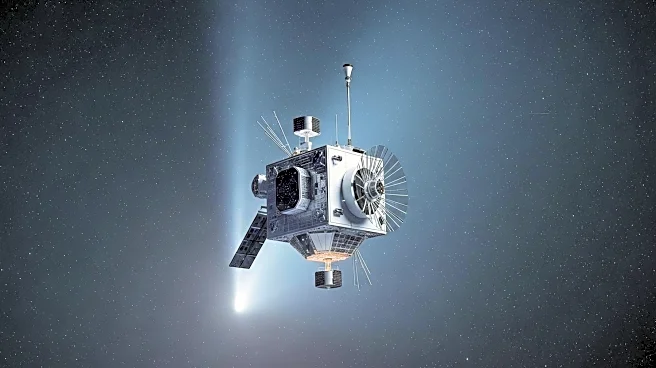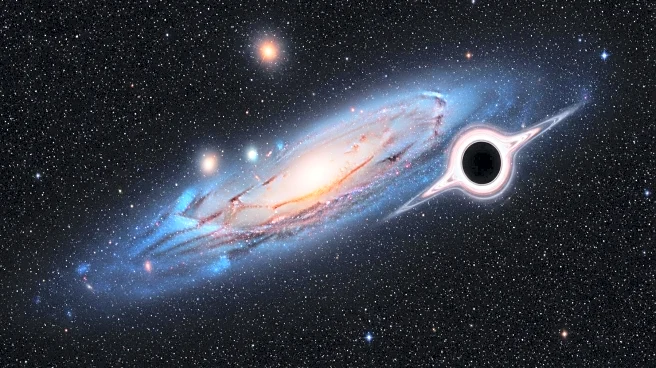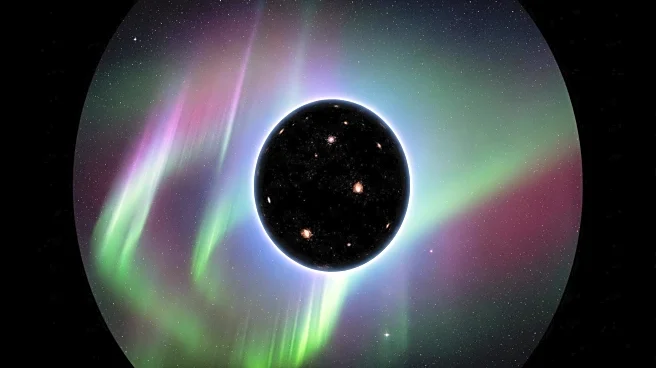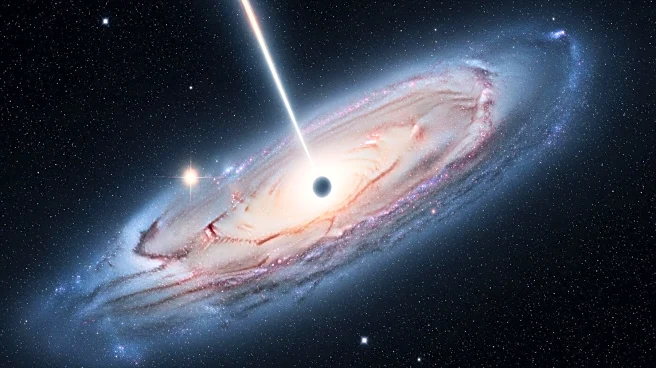What's Happening?
Astronomers have identified a massive wave pattern within the Milky Way galaxy, spanning 30 to 65 thousand light years. This discovery was made by analyzing the position and velocity of over 20,000 young stars, which exhibit systematic radial and vertical motions. The wave is believed to be a result of a past encounter with a dwarf galaxy, either passing by or being absorbed by the Milky Way. This interaction may have left traces in the form of the wave pattern observed. The study, conducted by European and American scientists, was published in the journal Astronomy & Astrophysics, and the findings were supported by data from the European Space Agency's Gaia space telescope.
Why It's Important?
The detection of this wave pattern is significant as it provides insights into the dynamic processes and historical interactions within the Milky Way. Understanding these interactions can help astronomers better comprehend the galaxy's evolution and structure. The potential past encounter with a dwarf galaxy suggests that such interactions may play a crucial role in shaping the Milky Way's current form. This discovery also highlights the importance of advanced astronomical tools like the Gaia telescope in uncovering hidden aspects of our galaxy.
What's Next?
Further analysis of data from the Gaia telescope and other sources may provide more information on the causes and implications of the wave pattern. Astronomers are expected to continue examining the motions of stars within the Milky Way to uncover additional details about its structure and history. This ongoing research could lead to new discoveries about the galaxy's formation and the role of external interactions in its development.
Beyond the Headlines
The study raises questions about the long-term impact of galactic encounters on the Milky Way's structure and behavior. Understanding these interactions could have broader implications for the study of other galaxies and cosmic phenomena. The research also underscores the importance of international collaboration in advancing our knowledge of the universe.

